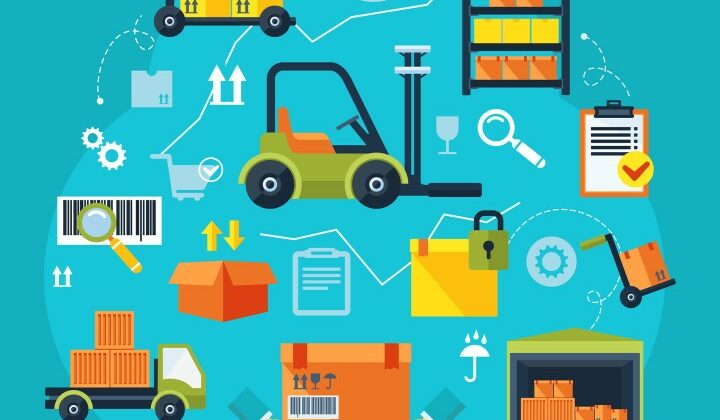
How a national logistics policy can bridge India’s supply chain

NEW DELHI : The logistics industry would be a major opportunity for India’s journey to become a $ 5 trillion economy, but before that it needs a massive price correction. Logistics costs in India are estimated at about 13 percent of gross domestic product (GDP) (about $ 400 billion) against the global average of nearly eight percent, according to a 2020 report by management consulting firm Arthur D. Little India in collaboration with the Confederation of Indian Industry (CII). This represents a competitiveness difference of about $ 180 billion per year. The report also says that if supply chain inefficiencies are not adequately addressed, the gap could be further widened to $ 500 billion by 2030.
In 2018, India fell to 44th position on the World Bank’s Logistics Performance Index (LPI), after jumping to 35th position in 2016 from 54th in 2014 largely due to the massive investment in mega projects like the Dedicated Freight Corridor, UDAN, Bharatmala, Sagarmala, and so on. The report, published every two years, ranked India 52nd in terms of “infrastructure quality” as well as “degree of timeliness”.
Fragmented, disorganized sector
Despite the launch of several mega-projects, logistics remains a largely fragmented and disorganized sector. One of the major issues hampering its growth is the massive infrastructural divide. Even today, organized logistics providers are more or less limited to the metros (20 to 30 cities) or special economic zones (SEZs), while micro, small and medium-sized enterprises (MSMEs) and agricultural industries in tier II / III – cities as well as rural areas have little choice but to use disorganized service providers. This sector breakdown exacerbates costs and affects efficiency. A varied and silo-based regulatory compliance model, incoherent IT systems, underdeveloped warehousing facilities and a shortage of skilled labor are the other key factors resulting in price increases. In the absence of a national policy, our supply chains are not in sync with the rapidly growing needs of our industries.
Logistics and supply chain trends for 2021
According to estimates by the Food and Agriculture Organization (FAO), almost 40 percent of food produced in India is wasted before it reaches the consumer. In monetary terms, this represents a loss of one lakh crore rupees. These losses can be attributed to fragmented food systems and gaps in supply chains. In addition, the multiple layers of intermediaries create serious vulnerabilities in our food supply chain.
A 2019 report from McKinsey and Company highlighted significant issues in India’s transportation value chain. The report said India’s logistics market is heavily dependent on regional brokers and is struggling with financing issues. “Shippers face issues such as low cost flow, low efficiency and transparency and limited visibility of vehicles and shipping in the value chain,” it added.
The origin of politics
Through a holistic national logistics policy (NLP), the government aims to bridge these gaps and reduce logistics costs by up to eight percent (of GDP) in five years. India’s logistics ecosystem is linked to $ 215 billion and is expected to grow with a CAGR of 10.5 percent by 2025. NLP aims to bring all stakeholders in the logistics industry under one umbrella using technology. It wants to create a portal with a single window that will digitally integrate service providers such as. Warehouses, shipping experts, third-party service providers, carriers and customs brokers with public bodies for a seamless flow of goods across regions. Along with efficient goods movement, efficient data tracking is crucial to the success of the supply chain. Therefore, decision makers plan to set up a logistics data and analysis center to track and report key figures. This would not only enable end-to-end visibility in real time, but also provide much-needed transparency in the sector. New-age technologies such as geo-tagging, auto-capture and big data could be used to build a robust network for monitoring supply chains. Through route optimization and consolidation of freight, we can drastically reduce transportation costs. We need to accelerate the development of multimodal logistics parks and remove chokepoints to improve connectivity. In addition, efficient inventory management can reduce indirect costs by 20-25 percent.
Sitics Logistics Solutions announces overseas expansion plans
Covid-induced disruptions have led to faster adoption of new technologies by industry stakeholders. Artificial intelligence, blockchain technology and the IoT (Internet of Things) have helped them reach new heights of efficiency. The government can also leverage these innovations to improve the supply chain network. An effective logistics policy would also help manufacturing companies reduce their logistics costs, which are very high at the moment. Another key aspect is the participation of private actors, and NLP must have room for public-private partnership models (PPP) for faster optimization of logistics and warehousing networks. As the government develops the integrated model, the government must preserve the autonomy and independence of the private sector. An efficient network of supply chains is essential for projects like Make in India and Startup India to build a self-help India.
(The writer is MD and CEO, NCML)


